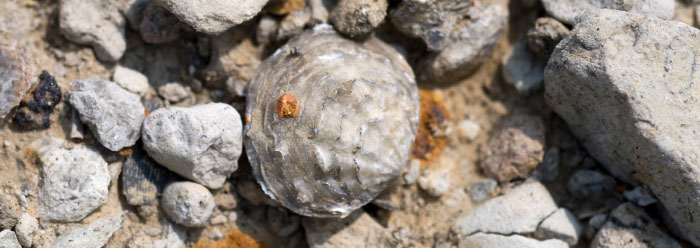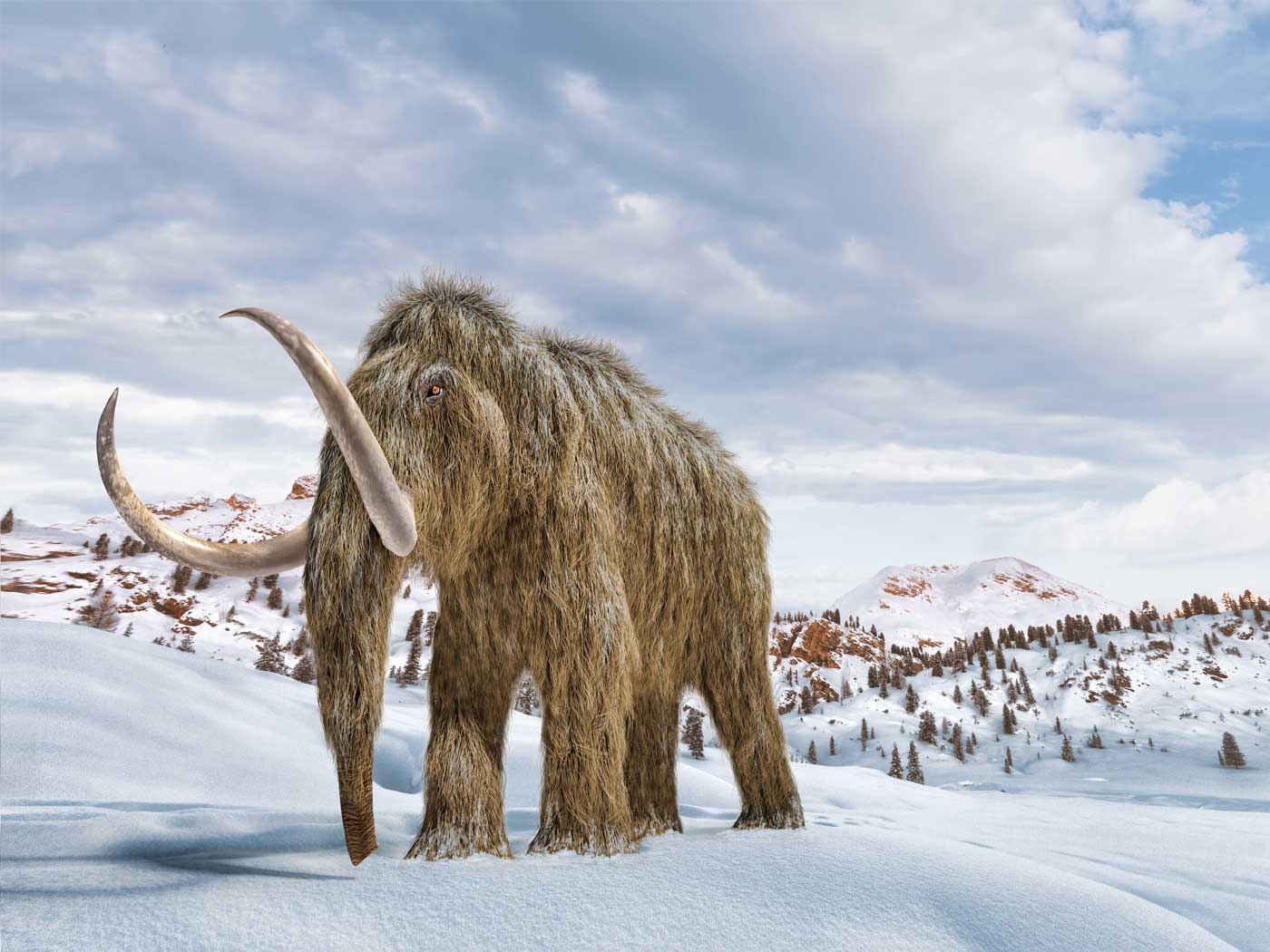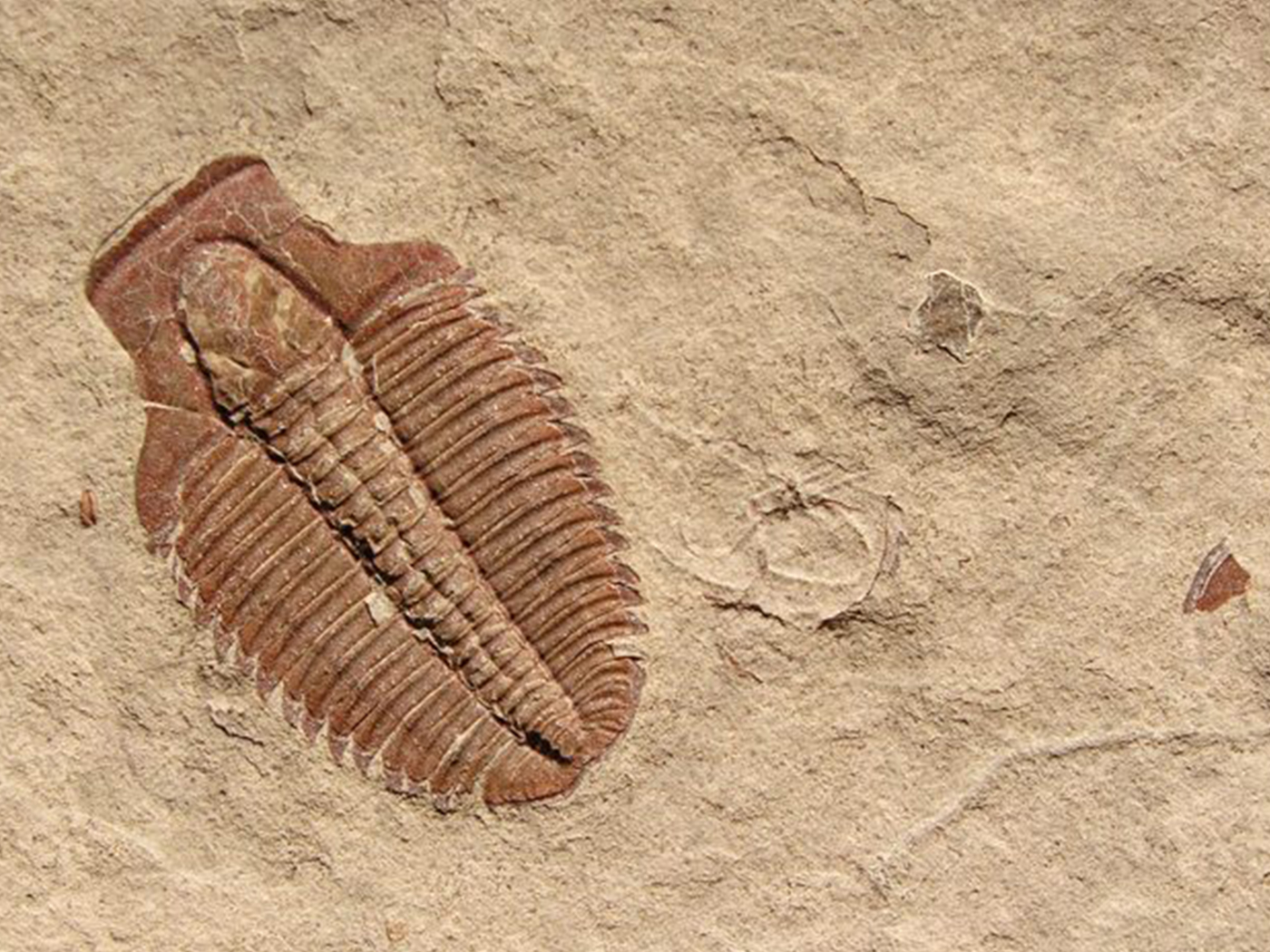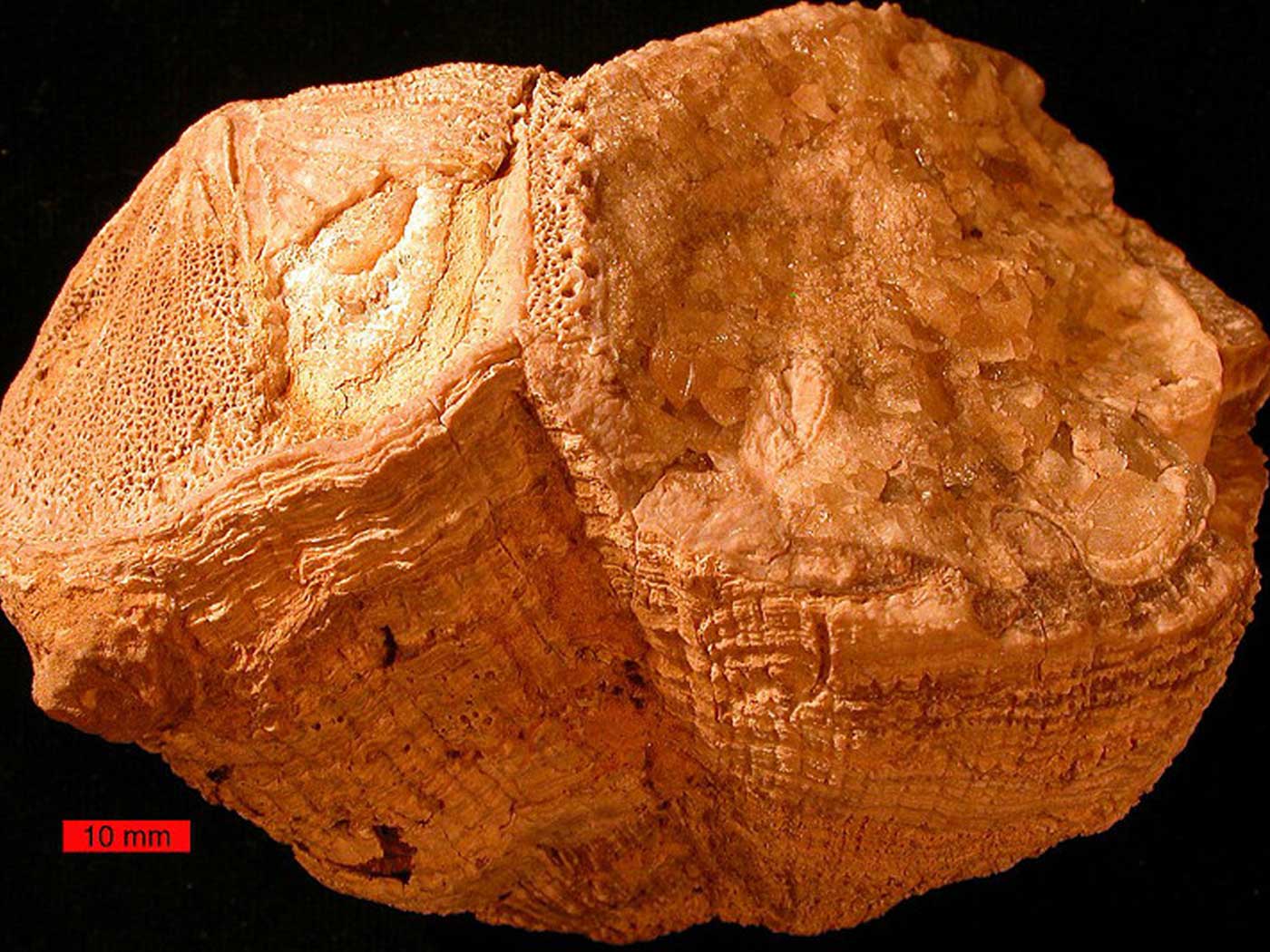The blob lives. Or at least, it has been reconstructed in a three-dimensional computer model.
Researchers at Imperial College London cut a fossil into 200 pieces and scanned each piece into a computer to build the model. The tiny three-millimeter-long fossilized creature has been named Drakozoon but looks like a "blob."1 It was found in strata near the bottom of the rock record, so it interests those who believe that fossilized organisms found at that depth evolved into today's creatures.
A college press release described the creature as jelly-like and roughly cone-shaped, with a tough exterior that included a hood. Its retractable tentacles held out particle-catching fans for feeding. It was entombed in sediment while its stalk was still attached to a small-shelled marine creature called a brachiopod (which looks the same as its modern counterparts).
An online video on the Imperial College website shows the 3D image of the Drakozoon created by the research team. The press release declared that "the model is helping researchers to understand what primitive species on early Earth looked like and how they might have evolved into the types of creatures that are on Earth today."1
So, into what did the blob evolve? Some researchers observed traces of what appeared to be segments in the form of eight body grooves. If it did have a segmented body, then according to evolutionary reckoning it could have been the ancestor or descendant of other segmented creatures, like earthworms or trilobites.
However, worm burrows have been found in much older rock layers,2 as well as in the same British limestone as the Drakozoon. Trilobites are well-known segmented arthropods of the Cambrian, which is below the Drakozoon layer, and tiny tracks presumably made by segmented creatures were also found beneath the Cambrian.3
These potential descendants lived long before their presumed blob ancestor. Actually, there is no way to tell from just fossils whether or not any similar-looking creature was an ancestor or descendant, so finding segments on this particular fossil adds more confusion than clarity to any related evolutionary story.
But not all agree that the grooves represent segments. "Others think that their bodies were structured in more free-form ways, similar to slugs."1 So, despite the press release's optimistic tone, the details of the data do not clarify the blob's status on the evolutionary tree. Of course, this would be expected if this creature was created as a stand-alone organism, not as part of a continuum of gradually morphing creatures as Darwin's followers imagine it.
Darwin once explained the lack of transitional life forms in the fossil record by saying, "No organism wholly soft can be preserved."4 He reasoned that most of the transitions occurred in soft parts, which he thought were not fossilized. But the blob was a soft organism.
In fact, the Drakozoon was discovered six years ago in the "Herefordshire Lagerstätte, one of England's richest deposits of soft-bodied fossils."1 Punctuated by layers of volcanic ash, this deposit consists of mud that hardened rapidly to entomb an array of soft-bodied marine creatures, including sponges and delicate microscopic radiolarians.
The Imperial College press release stated, "The researchers say it is very rare to find ancient soft bodied creatures intact because they normally decompose before they can be preserved in sediment."1 When compared to the high volume of shelled creatures like clams in the fossil record, soft bodies are certainly rare. However, their impressions, casts, footprints, molds and mineralized whole bodies are constantly surfacing in scientific journal reports. Sponge embryos, jellyfish, squid, brains, and many other soft-body fossils have been found. These squarely refute Darwin's assertion.
But even more remarkable are the over 50 unique fossil caches around the world that have provided original soft tissue samples--skin, collagen, and blood vessels--of birds, mammals, and dinosaurs.5
While fossilized soft parts are rare, they should not exist at all if today's slow processes are the only options available to explain the past. And although original soft tissue is even rarer, it should have completely decayed long ago if the earth's rock layers are actually as old as their evolutionarily assigned dates indicate.
Instead, it is clear from both the fossil record--including the soft-bodied Drakozoon--and the Bible's record that earth's history did not consist of vast ages of slow-and-gradual events. Instead, it was characterized by recent and short-lived major and minor catastrophes.
References
- Ancient blob-like creature of the deep revealed by scientists. Imperial College London press release, August 4, 2010, reporting on research published in Sutton, M. D. et al. A soft-bodied lophophorate from the Silurian of England. Biology Letters. Published online before print August 4, 2010.
- Seilacher, A., P. K. Bose and F. Pfluger. 1998. Triploblastic Animals More Than 1 Billion Years Ago: Trace Fossil Evidence from India. Science. 282 (5386): 80-83.
- Thomas, B. Fossil Footprints Trample Evolution's Timeline. ICR News. Posted on icr.org October 15, 2008, accessed August 4, 2010.
- Darwin, C. 1968. The Origin of Species. J. W. Burrow, ed. Middlesex, UK: Penguin Books Inc., 298.
- Fresh Tissues Show That Fossils Are Recent. Posted on icr.org, accessed August 4, 2010.
* Mr. Thomas is Science Writer at the Institute for Creation Research.
Article posted on August 10, 2010.






















